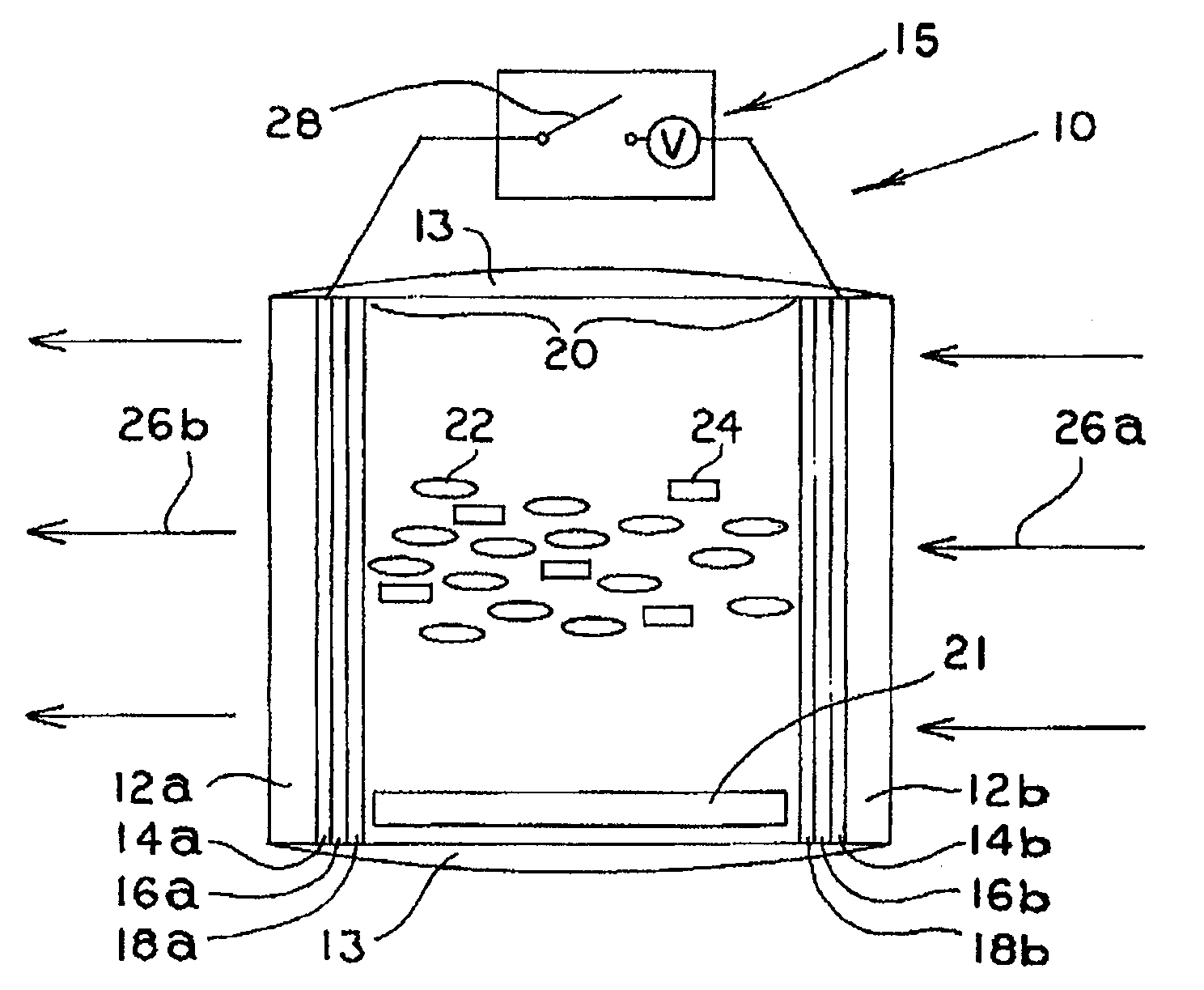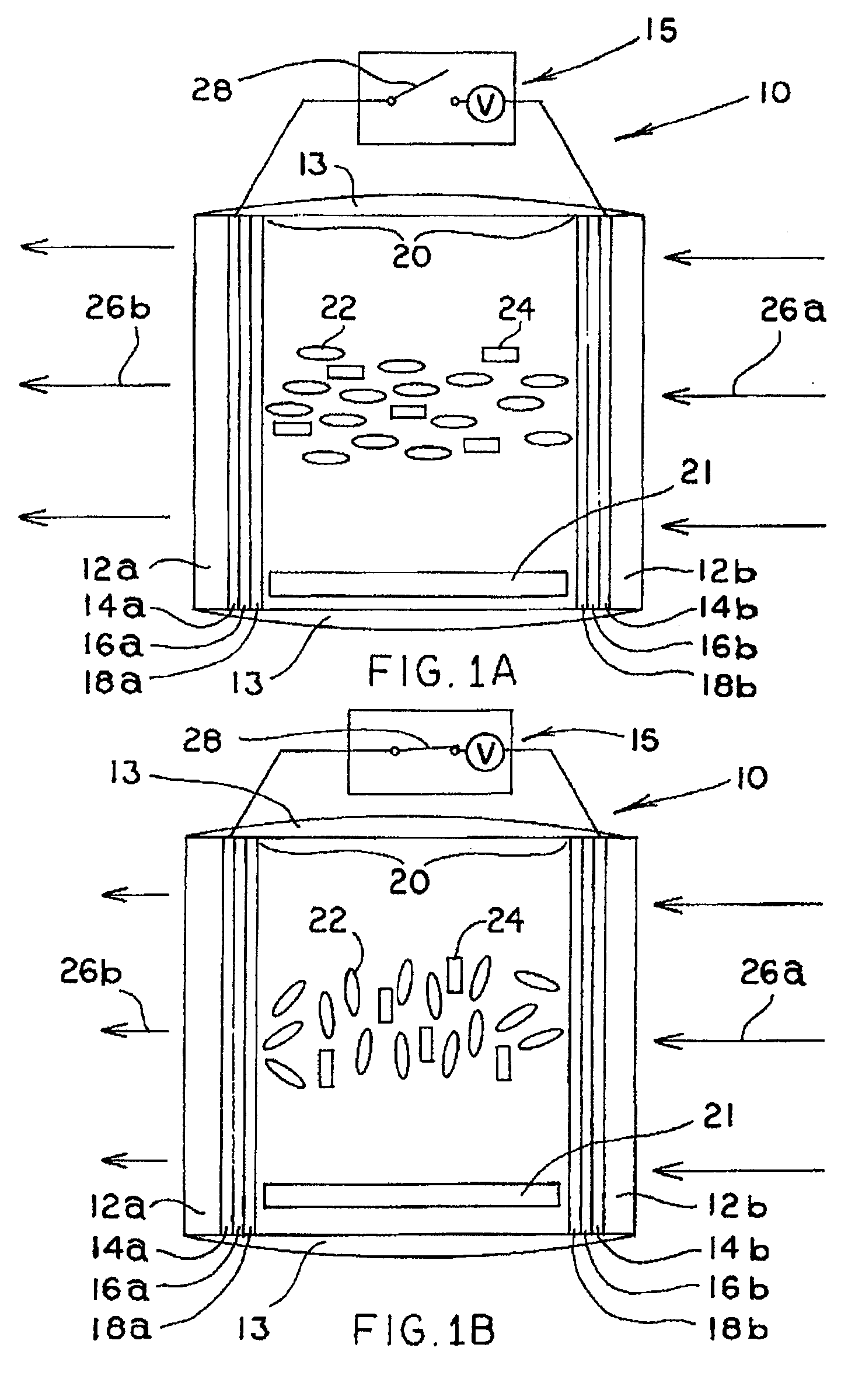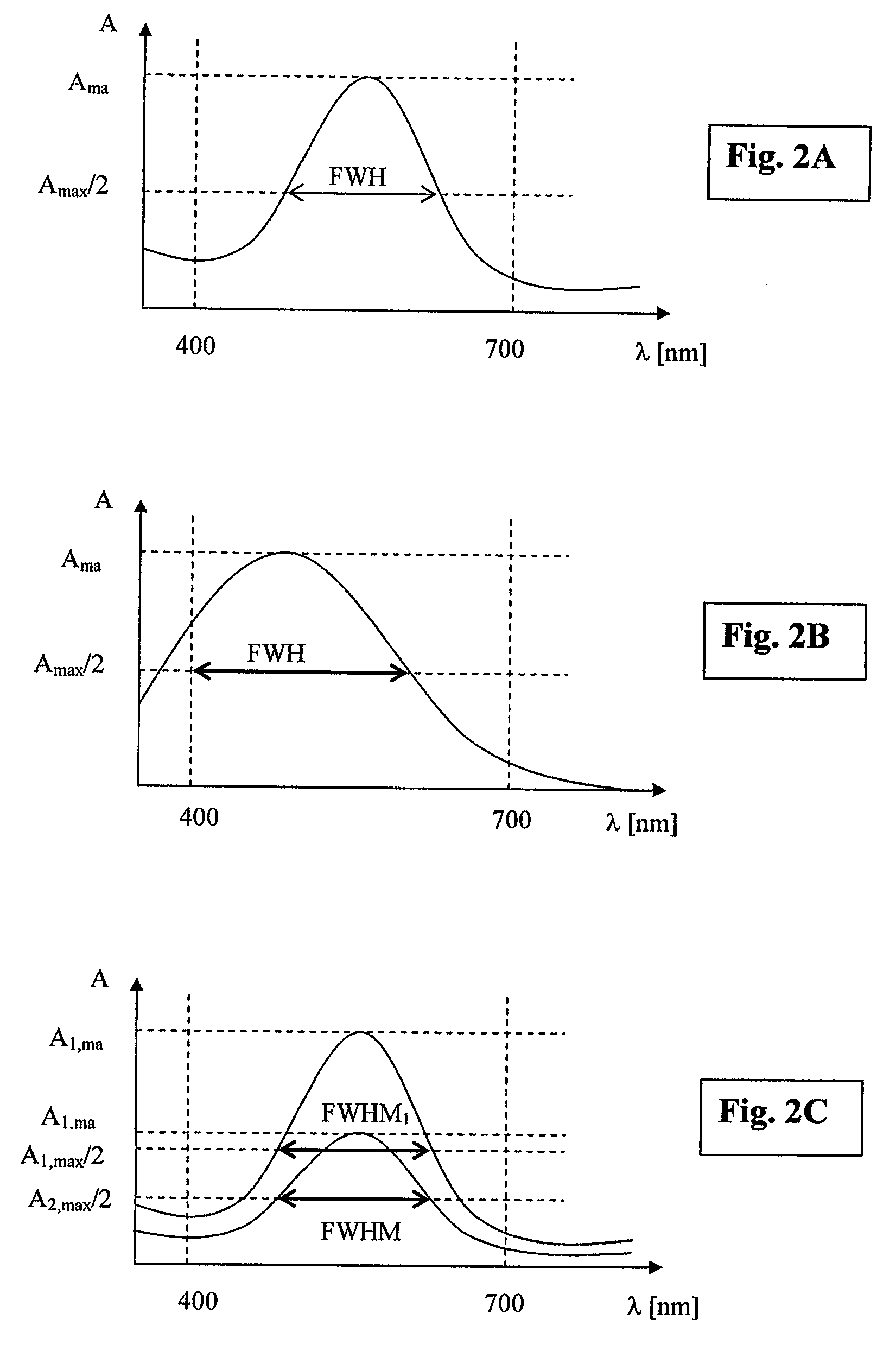Wide band variable transmittance optical device and mixture
a transmittance optical and wideband technology, applied in the direction of liquid crystal compositions, instruments, chemistry apparatuses and processes, etc., can solve the problems of limiting the light transmission of the device, no current commercial liquid crystal guest-host device that provides wideband absorption greater than 175 nm for eyewear applications, and inacceptable eyewear applications
- Summary
- Abstract
- Description
- Claims
- Application Information
AI Technical Summary
Benefits of technology
Problems solved by technology
Method used
Image
Examples
example 1
[0083]A variable transmission cell was prepared according to the following protocol. A test cell was fabricated using substrates of 5 mil polyethylene terephthalate (PET) pre-coated with a conducting polymer (Kimoto Tech, Cedartown Ga., U.S.A.). The conductive polymer served as a transparent electrode. On top of the conducting polymer, a coating of polyimide, Nissan SE1211 (Nissan Chemical Industries, Ltd., Tokyo, Japan), was applied by silk-screening and then baked at 100° C. for 2 hours. This polyimide coating served as an alignment layer designed to induce a substantially homeotropic surface alignment of the liquid crystal molecules. Next, Shinshikyu EW plastic spheres, 6 micron in diameter, (Hiko Industrial Ltd, Hong Kong) were sprayed onto one of the substrates to act as spacers. A thin bead of UV curable adhesive, Loctite 3106, (Henkel AG & Co. KGaA, Dusseldorf, Germany) was then applied around the perimeter of one of the substrates, leaving a gap that would serve as a fill po...
example 2
[0086]A variable transmission cell was prepared according to the following protocol. A test cell was fabricated using substrates of 3 mil polyethylene terephthalate (PET) pre-coated with a transparent conducting ITO (Techimat, U.S.A.). On top of the conducting polymer, a coating of polyimide, Nissan SE1211 (Nissan Chemical Industries, Ltd., Tokyo, Japan), was applied by silk-screening and then baked at 100° C. for 2 hours. This polyimide coating served as an alignment layer designed to induce a substantially homeotropic surface alignment of the liquid crystal molecules. Next, Shinshikyu EW plastic spheres, 6 micron in diameter, (Hiko Industrial Ltd, Hong Kong) were sprayed onto one of the substrates to act as spacers. A thin bead of UV curable adhesive, Loctite 3106, (Henkel AG & Co. KGaA, Dusseldorf, Germany) was then applied around the perimeter of one of the substrates, leaving a gap that would serve as a fill port. The two substrates were then assembled, pressed together against...
PUM
 Login to View More
Login to View More Abstract
Description
Claims
Application Information
 Login to View More
Login to View More - R&D
- Intellectual Property
- Life Sciences
- Materials
- Tech Scout
- Unparalleled Data Quality
- Higher Quality Content
- 60% Fewer Hallucinations
Browse by: Latest US Patents, China's latest patents, Technical Efficacy Thesaurus, Application Domain, Technology Topic, Popular Technical Reports.
© 2025 PatSnap. All rights reserved.Legal|Privacy policy|Modern Slavery Act Transparency Statement|Sitemap|About US| Contact US: help@patsnap.com



